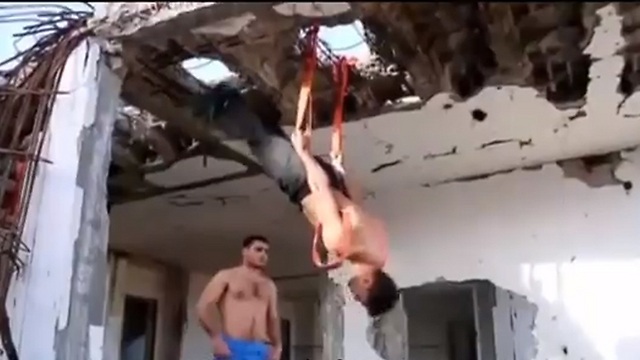
A look inside Gaza
Despite the catastrophic economic situation in Gaza, which includes high unemployment and immense poverty, residents have persevered, creating something out of nothing
Gaza has beautiful sunny beaches, and almost all of its residents live in an urban environment, but the catastrophic economic situation - including immense poverty and high unemployment - has led many of its residents to nickname the coastal enclave the "biggest prison in the world." Nonetheless, many Gazans persevere to make the best of their situation with their few resources.
Here are some important figures and stories of Gazans, who attempt to overcome Gaza's woes:
-Gaza is a total of 365 square kilometers. 2 million people live in the small territory.
-62% of Gazan residents are under the age of 24.
-The unemployment rate stands at 43%, but employed persons earn relatively low incomes. The average private sector salary is NIS 750 per month, while the average public sector salary is NIS 1,000-1,500/month.
-Economic, security, and political hardship have led to a dramatic increase in suicide attempts this past year.
-An example of the depressing situation: An average household in Gaza receives between six to eight hours of electricity a day, and residents don't know which part of the day their home will receive it. The lack of electricity has compelled some residents to improvise, employing small machines to power single devices such as the television. Larger backup generators also exist, but will sometimes fail as well.
-The complex relationship between Hamas, the PA, Egypt, and Israel largely explain why gas is so scarce in Gaza, but the average Gazan is not interested. Some Gazans have developed creative solutions. For example, Munthir Al-Qassas, a taxi driver, invented the first electric car in Gaza. Al-Qassas travels around Gaza in his invention, but it runs quite slowly.
-Few gyms exist in Gaza, leading many Gazans to exercise outdoors. Instead of using dumbbells and weights, Gazans employ benches, walls, and columns, much of which exists in areas destroyed in Operation Protective Edge.
-Parkor, the art of using one's body to jump between buildings and over obstacles, is very popular in Gaza. Gazans do parkor in many different places, including in areas destroyed in previous wars.
-Naji Tolba, a young resident of Gaza, is a phenomenal billiardist. He decided to play the game one day at Gazan café and has since become one of the most talented billiardists in Gaza, wining many local competitions.











